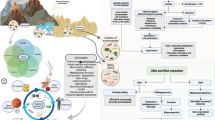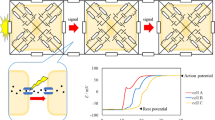Abstract
The effects of gravity on alamethicin doped planar lipid bilayers and on reconstituted porins of Escherichia coli outer membrane, respectively, have been investigated in this paper. The aim of the study was to find out whether and how gravity influences the highly simplified system: membrane-ion channel, in order to provide a novel approach to the explanation of gravity effects on living systems. This is necessary, as even single cells can react to gravity changes without having perceptive organelles. The mechanism of this detection is not clear yet. One possibility might be the detection of gravity by the membrane itself, or by the interaction of integral membrane proteins with gravity.
Here we show for the first time that gravity directly influences the integral open state probability of native ion channels (porins) incorporated into planar lipid bilayers. Under hypergravity, especially the open state probability of porins is increased, whereas it is decreased in the microgravity case. The dependency is sigmoidal with the steepest region at 1 to 1.3 g. In the light of these experiments, a general effect of gravity on ion channels and membranes seems to be reasonable, possibly providing an explanation for several impacts of gravity on living systems.
Similar content being viewed by others
References
Berrier, C. et al.: Fast and slow kinetics of porin channels from Escherichia coli reconstituted into giant liposomes and studied by patch-clamp. FEBS, 306 (2,3), 251–256 (1992).
Goulian, M, Mesquita, O.N., Feygenson, D.K., Nielson, C, Anderson, O.S. andLibchaber, A.: Gramicidin channel kinetics under tension. Biophys. J., 74, 328–337 (1998).
Hanke, W.: Studies on the interaction of gravity with biological membranesusing alamethicin doped planar lipid bilayers as a model system. Adv. Spaces Res., 17, 43–50 (1996).
Hikita, C. et al.: Structural and functional characterisation of the OmpF and OmpC porins of the E. coli outer membrane. Re. Microbiol. 140, 177–190 (1989).
Ingber, D.: How cells (might) sense microgravity. FASEB J., 13 (Suppl.), 3–15 (1999).
Klinke, N. et al.: The bilayer block module: a system for automated and remote controlled measurements of ion current fluctuations. Space Forum 2, 203–212 (1998).
Klinke, N., Goldermann, M. andHanke, W.: The properties of alamethicin incorporated into planar lipid bilayers under the influence of microgravity. Acta Astronautica, 47, 771–773 (2000).
Le Dain, A.C. et al.: Porins of Escherichia coli: unidirectional gating by pressure. EMBO Journal, 15 (14), 3524–3528 (1996).
Macdonald, A.G. &Martinac, B.: Effect of high hydrostatic pressure on the porin OmpC from Escherichia coli. FEMS Microbiology Letters 173, 327–334 (1999).
Montal, M. &Mueller, P.: Formation of biomolecular membranes from lipid monolayers and a study of their electrical properties. Proc. Natl. Acad. Sci. USA, 69, 3561–3566 (1972).
Mueller, P. et al.: Reconstitution of a cell membrane structure in vitro and its transformation into an excitable system. Nature, 194, 979–980 (1962).
Opsahl, L.R. andWebb, W.W.: Transduction of membrane tension by the ion channel alamethicin. Biophys. J., 66, 71–74 (1994).
Schatz, A., Reitstetter, R., Briegleb, W. andLinke-Hommes, A.: Ein Modell für den Einfluß der Schwerkraft auf biologische Vorgänge in einzelnen Zellen. Spektrum der Wissenschaft, 9, 17–22 (1993).
Sukharev, S.: Mechanosensitive channels in bacteria as a membrane tension reporter. FASEB J., 13 (Suppl.), 55–61 (1999).
Thévenet, D., D’Ari, R. &Bouloc, P.: The SIGNAL experiment in BIO-RACK: Escherichia coli in microgravity. J. Biotechnology, 47, 89–97 (1996).
Author information
Authors and Affiliations
Rights and permissions
About this article
Cite this article
Goldermann, M., Hanke, W. Ion channel are sensitive to gravity changes. Microgravity sci. Technol. 13, 35–38 (2001). https://doi.org/10.1007/BF02873330
Revised:
Accepted:
Issue Date:
DOI: https://doi.org/10.1007/BF02873330




